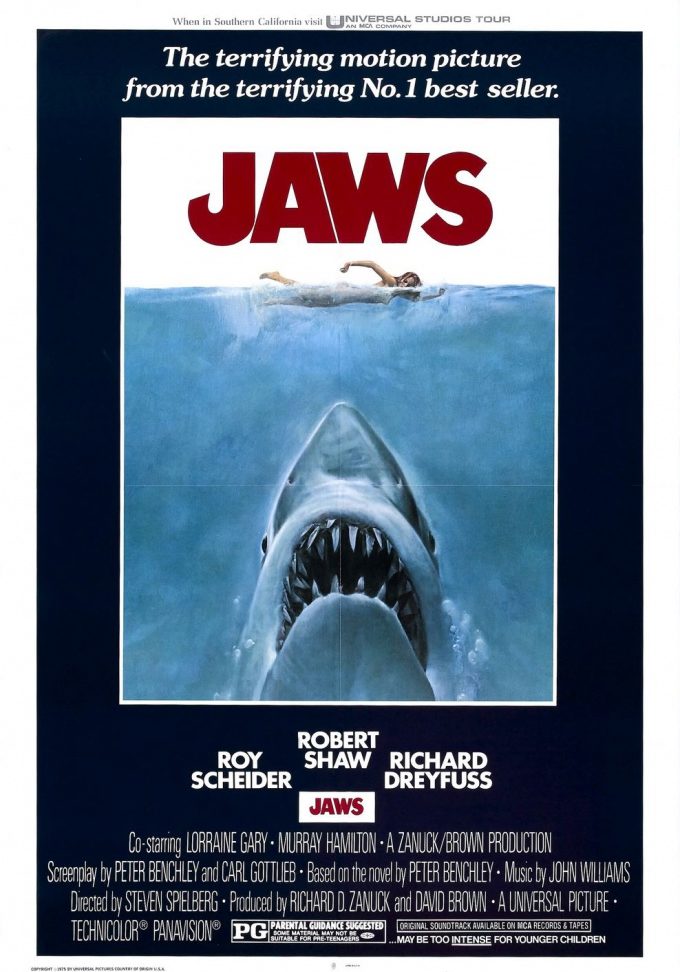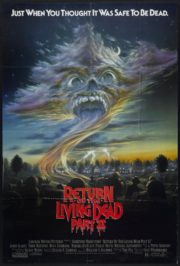Beneath the Surface: A Terror Emerges
“You’re gonna need a bigger boat.” This iconic line from Steven Spielberg’s Jaws (1976) perfectly encapsulates the realization that something formidable and terrifying has entered the peaceful life of Amity Island—a great white shark with a taste for the flesh of unsuspecting vacationers. Spielberg, a then-up-and-coming director, crafted not just a film but a cultural phenomenon that reshaped the horror landscape and left an indelible watermark on cinematic history.
Chilling Currents: Crafting Terror on the Waves
The dread in Jaws doesn’t just come from the fear of being devoured; it’s also in the unknown, the unseen lurking beneath the waves. Spielberg masterfully employs suspense over gore, using John Williams’ now-famous menacing score to signal impending doom. The director’s clever decision to often show the shark from the victim’s underwater perspective—or not at all—feeds into the audience’s fear of what can’t be seen, equally evoking the dread of Hitchcock’s unseen horrors. Moments of lingering camera shots on the vast, open ocean instill a sense of insignificance and vulnerability against nature’s might.
Visions of Terror: A Cinematic Maelstrom
From the first submerged, claustrophobic POV shots, the film’s cinematography becomes an essential character in itself. Shedding the daylight across the beaches of Amity Island, Spielberg bathes the audience in normalcy before plunging them into a murky nightmare. His use of lighting subtly shifts as the story progresses, playing with shadows and natural light to evoke an organic sense of fear. No groundbreaking special effects here—instead, the mechanical shark (affectionately dubbed “Bruce” by the crew) owes its effectiveness to its sparing use, making its appearances all the more jarring and impactful.
The soundtrack and sound effects remain a pillar of the film’s suspense. Williams’ score is sparing yet remarkable in its simplicity, using two alternating notes to signal impending danger. Moments of silence serve to magnify anxiety, followed by eruptions of chaotic orchestration during attacks. The lack of a visual on the shark is often complemented by the sound, creating a sensory scare that relies on the imagination as much as perception.
The Human Element: Anchoring the Fear
The inhabitants of Amity Island are presented as everyday people— a factor that amplifies the relatability of their terror. Roy Scheider’s Chief Brody is the everyman dragged into extraordinary circumstances, while Robert Shaw’s Quint is the seasoned seafarer meeting his match. Richard Dreyfuss’ Hooper brings a scientific perspective, balancing the trio of shark hunters with rationale and fear. Their performances capture a spectrum of human reactions to fear: denial, obsession, and reason, all while fighting an unpredictable adversary.
Delving into the Depths: More Than Just a Monster Movie
Jaws is more than just a film about a shark attack; it plumbs the depths of human nature and societal priorities—public safety versus commercial interests, man versus nature. This layering of issues elevates the film above mere shock and awe, securing its position as a harbinger of intelligent horror. The shark is not just a killer; it is a catalyst for exploring deeper fears about the unknown and unintended consequences of humanity’s actions.
The methods used to induce fear in Jaws are a blend of psychological tension and visual shocks. Spielberg expertly leverages the viewer’s fear of the unseen, making the eventual confrontations with the shark feel earned and visceral. Gore is used sparingly; the suggestion of violence often proves more potent than its explicit depiction, allowing the audience’s mind to fill in the horrifying blanks.
Final Assessment: The King of the Horror Seas
Jaws stands out in horror cinema due to its effective blend of relatable characters, striking visuals, and perpetual suspense. It may not be the goriest or the most supernatural horror movie, but it’s undeniably effective, inducing genuine chills down the spines of viewers. It’s a film that caters to a wide audience, offering different levels of dread—engaging horror enthusiasts and gripping those who dip their toes into the genre sparingly.
In comparison to other horror films, Jaws set a precedent for man-versus-monster narratives and pioneered summer blockbusters. While contemporary horror often veers towards the explicit and the paranormal, Spielberg’s classic is a reminder of the terror that thrives in simplicity and primal fear.
In conclusion, Jaws is a masterclass in suspenseful storytelling, featuring a blend of grounded characters, intelligent theming, and well-executed horror elements. For those sensitive to violence, this film is largely free of the graphic content that dominates much of current horror. This shark tale remains as potent today as it was at its release, a testament to its enduring allure and influence. Spielberg’s oceanic opus is a must-watch, securing its place at the pinnacle of the horror genre and offering a compelling experience to all who dare to watch.




